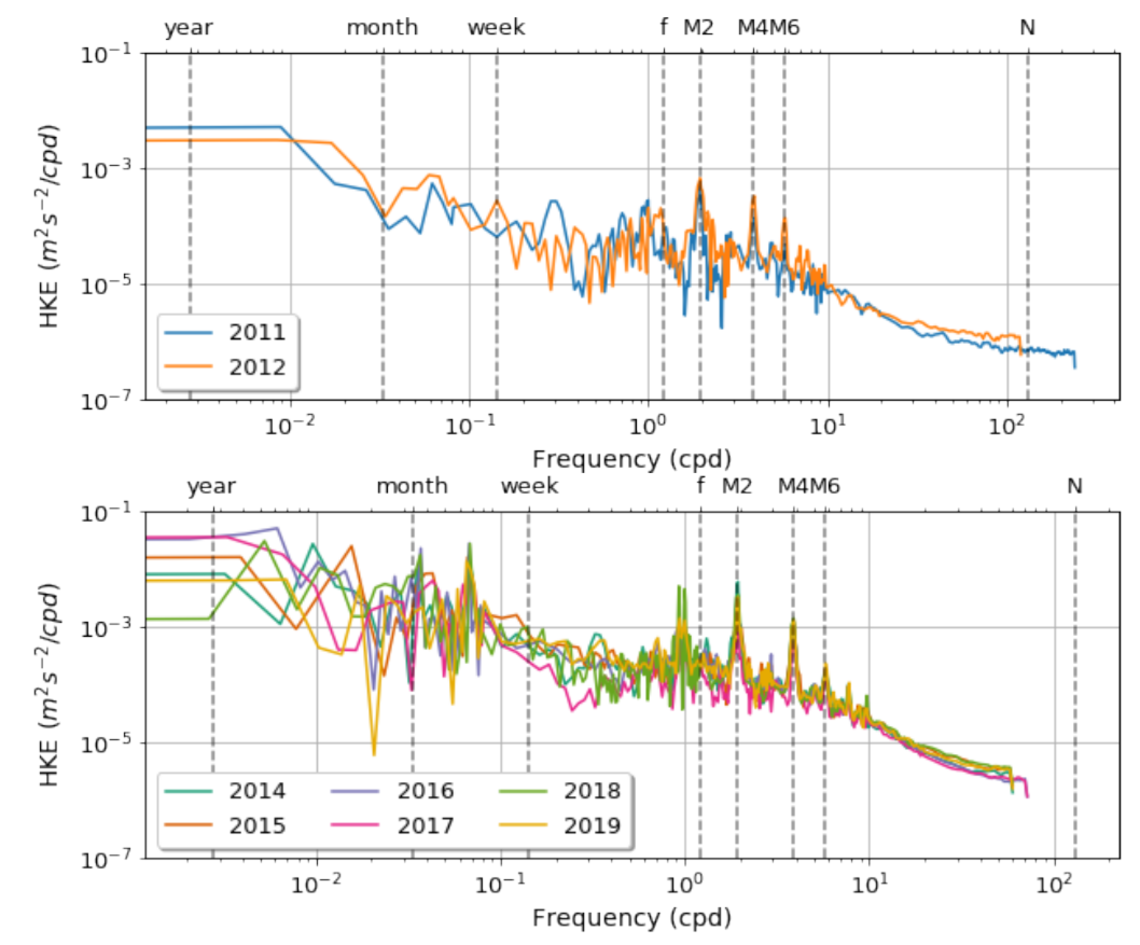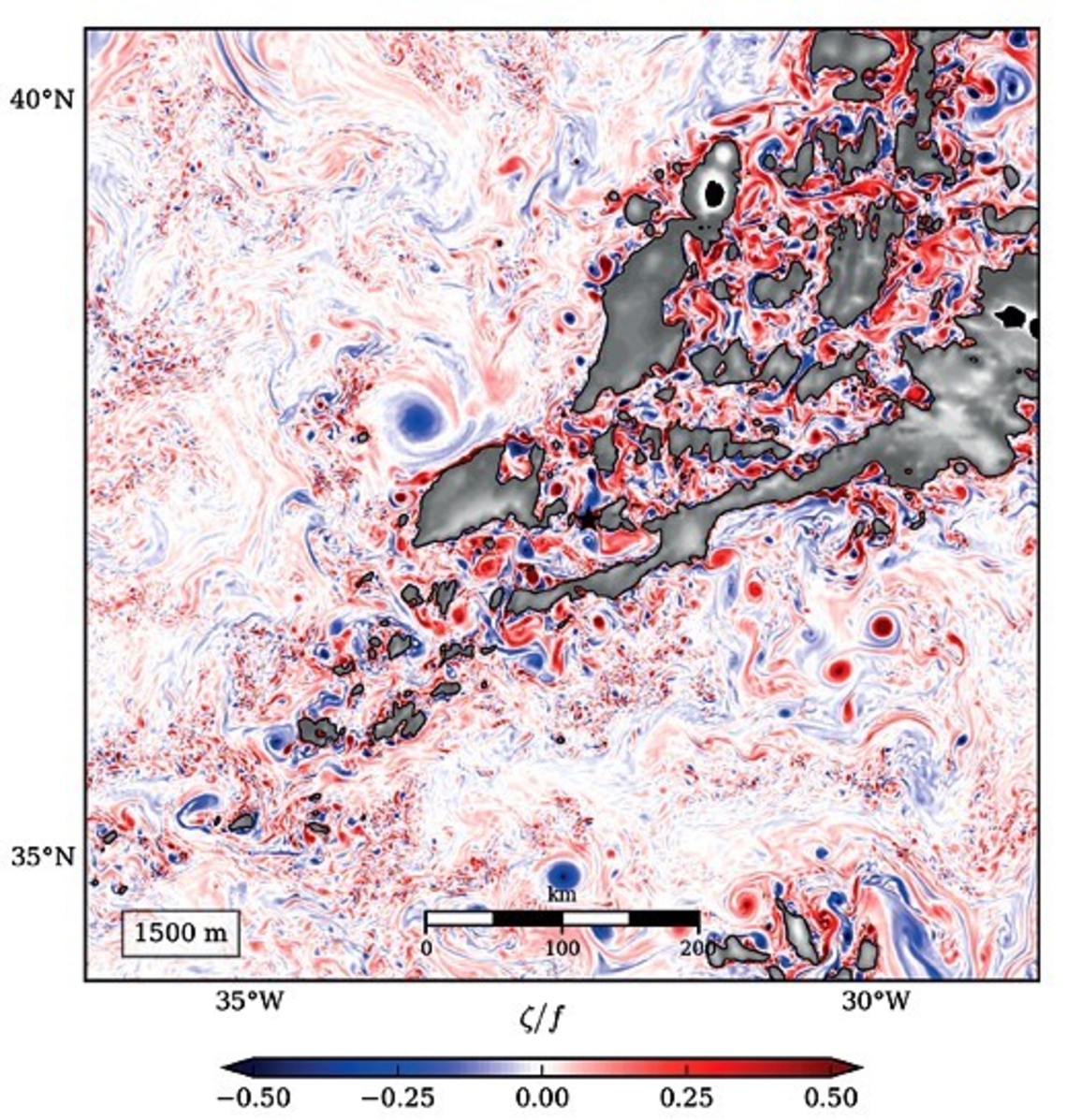The role of the eddies and tide in the dispersion
The heat flux injected by the hydrothermal vents into the water column drives vertical motions that entrain the surrounding water resulting in a plume. At Lucky Strike the plume rises about 150 m above the sea floor. Because the heat injection is continuous, the water in the plume has to be dispersed further away by the currents. A very important question is how this dispersion is done, how far and how fast can the water be exported before being completely diluted? The answer depends on the spatio-temporal variability of the deep currents. The temporal variability is well sampled by the mooring of the Observatory. The mooring monitors the bottom current and the temperature and salinity of the water column near the hydrothermal vents. The measurements show a very stable environment over the ten-year period. The observed temporal variations are dominated by the tidal cycle at the semi-diurnal period (peaks in the power spectra). Over longer periods of time, the variations look like noise, which is the signature of turbulence. However, from the observations at a single place, it is impossible to determine the spatial variability and how it combines with the temporal variability.
Power spectra of the measured bottom currents (left) and map of vorticity around Lucky Strike at 1,500m depth, as revealed by the numerical experiments. The power spectra measure the variance of the time series per period of time. The years 2011 and 2012 differ because the mooring was at a slightly different place than the other years. The circular patches of vorticity are the eddies: in red the cyclones (spinning anti-clockwise) and in blue the anticyclones (spinning clockwise). | |
To complement the observations we use numerical simulations. The simulations reproduce the currents as realistically as possible by including all known ingredients: the bathymetry, the large-scale water-masses distribution, the atmospheric forcing (wind, heat flux, evaporation and precipitation) and the tidal forcing. From the simulations we interpret the turbulent noise in the observations as being due to interactions of the mesoscale eddies with the topography. This interaction is due to the surface eddies, which populate the World Ocean. The larger eddies extend vertically down to the bottom where they stir the deep ocean, which create small eddies, called submesoscale eddies. We have shown that these eddies enhance the dispersion with respect to a case where there would be absent. Despite being principally oscillating, tidal currents also contribute to the dispersion.
← Read the 10 success stories published to celebrate 10 years of monitoring on EMSO-Azores → |



